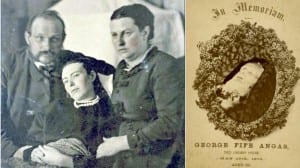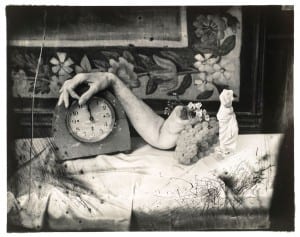In the Victorian Era, mortality rates were high, especially among young children. In order to preserve their image, families would take pictures together as a memento. However, sometimes they posed with their dead relatives, as this would be the only memory of them they would have. In these photos, the dead would be positioned alongside the living in order to create a family photo. Due to the long exposure method of taking photos in that era, the stillness of the dead made them appear more in focus than the living; the opposite of how ghost are perceived in modern style ghost pictures.
In the modern day, death photography is much less present, and people are early, if ever, seen posing with their deceased relatives. The evolution of digital software means that people no longer have to pose of corpses to be with people who have died. However, this does not mean pictures with the dead no longer exist. One photographer who does this is Joel Paul Witkin. Witkin uses severed limbs and skeletons in his photographs in order to give them a macabre feeling. The surrealist pictures use black and white tones, as well as the people parts in with everyday objects to reflect on the morality of people. This is reminiscent of the Victorian Death Photography style, playing off the style and imitations of the old photography in order to create a style that reflects the same macabre feeling.
By looking at how the dead are portrayed, I can work to incorporate this style into my work. By being able to show those who have passed on in a way that reflects the time period will ground the work in its mies-en-scene, combining to enhance the overall piece. By looking into the victorian era, the photos from the time can be featured in the scene, in order to build up the atmosphere around the exhibition to match the content. However, if I look at a modern ghost story, the modern aesthetic can be used to create and build the scene. By matching the surrounding photos to the scene, I can further enhance the atmosphere of the exhibition, by reflecting the themes of the content in it’ surroundings.

